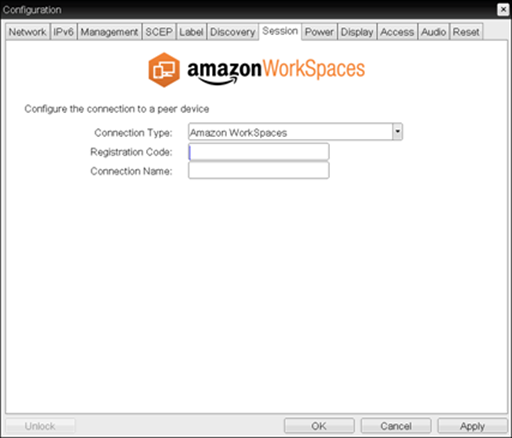
- #Client amazon workspaces login how to#
- #Client amazon workspaces login install#
- #Client amazon workspaces login code#
- #Client amazon workspaces login license#
Version 1.33.0 of Amazon Cloud Development Kit (AWS CDK) should be installed.AWS Command Line Interface (AWS CLI) should be already configured with Administrator permission.
#Client amazon workspaces login code#
Walkthrough: Setup AWS Managed Microsoft AD and deploy Amazon WorkSpacesĭownload the sample code here to deploy AWS Managed Microsoft AD and Amazon WorkSpaces.
#Client amazon workspaces login install#
Install SAP GUI and SAP Secure Login Client on the launched Amazon WorkSpaces.Launch Amazon WorkSpaces with selected created users from AWS Managed Microsoft AD.

#Client amazon workspaces login license#

Scenario 2 architecture – Amazon WorkSpaces and Azure AD-DSįigure 2 Amazon WorkSpaces and Azure AD-DS Scenario 1 architecture – Amazon WorkSpaces and AD Connector with AD on-premisesįigure 1 Amazon WorkSpaces and AD Connector with AD on-premises In this blog, we demonstrate the GUI installation on Windows 10. ”įollow SAP Note 66971 to ensure the supportability on the selected Windows version with SAP GUI.
#Client amazon workspaces login how to#
You can apply scenario one using the process outlined in the blog “ How to Connect Your On-Premises Active Directory to AWS Using AD Connector.” Scenario two can be referenced in the blog “ Add your WorkSpaces to Azure AD using Azure Active Directory Domain Services. In this blog, we will be sharing an example of scenario three using AWS Managed Microsoft AD. Integrate Amazon WorkSpaces with AD Connector, pre-built Active Directory (AD) in Amazon Elastic Compute Cloud (Amazon EC2), and AWS Directory Service for Microsoft Active Directory (AWS Managed Microsoft AD) (figures 3-1 and 3-2).Integrate Amazon WorkSapces with Azure Active Directory Domain Services (Azure AD-DS) (figure 2).Integrate Amazon WorkSpaces with AD Connector and existing Active Directory on-premises environment (figure 1).Please contact your SAP account executive for more detail. (*)Based on the SAP Note 1848999, licenses for SAP Single Sign-On are required. We also cover how to use your existing Active Directory service, either in the public cloud or an on-premises environment, to quickly provide thousands of desktops to workers across the globe. In this blog, we share how to integrate SAP Single Sign-On(*) based on Kerberos/SPNEGO with Amazon WorkSpaces. Moreover, SAP Single Sign-On supports different types of authentication methods including Kerberos/SPNEGO, X.509 certificates and Security Assertion Markup Language (SAML). This includes possession of mobile phone and RSA SecurID card.

SAP Single Sign-On provides the simplicity to manage users’ authentication, secure data communication, and integrate with two-factor and risk-based authentication. SAP Single Sign-On allows users to have secure access to SAP and non-SAP systems using centralized authentication whether the systems are on-premises or in the cloud.


 0 kommentar(er)
0 kommentar(er)
